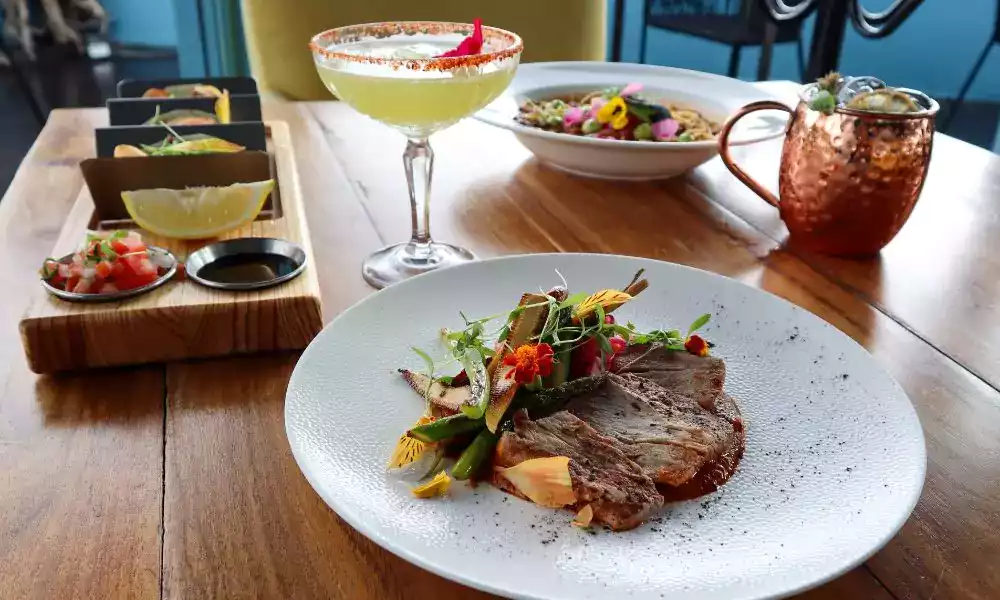
Foraging is making a significant comeback, with chefs and home cooks rediscovering the rich flavors and health benefits of wild ingredients. As culinary preferences shift toward sustainability and authenticity, wild foods are becoming a key element in modern kitchens. From ancient survival techniques to gourmet fine dining, foraging is transforming how we perceive and use natural ingredients.
The Shift to Nature’s Pantry
- The growing interest in natural, unprocessed foods is leading to a resurgence of wild ingredients.
- Chefs and consumers are increasingly looking for sustainable alternatives to industrial agriculture.
Foraging: A Lost Art Rediscovered
- Historically, foraging was a primary food source; today, it’s viewed as a gourmet experience.
- Modern foraging combines tradition with contemporary culinary innovation.
The Global Movement of Wild Food Exploration
- Countries around the world are embracing foraged ingredients in their traditional and modern cuisines.
- Social media is playing a crucial role in the popularity of foraging culture.
The Science of Foraging: Understanding Wild Ingredients

Foraged ingredients offer superior nutritional value and play an essential role in environmental sustainability. Understanding their benefits and risks is crucial for safe and responsible consumption.
Nutritional Superiority of Wild Foods
- Wild foods often contain higher levels of vitamins, minerals, and antioxidants than their cultivated counterparts.
- They offer unique flavors and bioactive compounds that contribute to health and wellness.
Ecological Role of Wild Edibles
- Foraging promotes biodiversity by encouraging the sustainable use of natural resources.
- It helps maintain ecosystem balance by controlling invasive species and supporting native flora.
Identifying Safe and Edible Wild Ingredients
- Differentiating between edible and toxic plants requires proper knowledge and guidance.
- Using reliable sources and tools is crucial to ensure safe foraging practices.
From Forest to Plate: Integrating Wild Ingredients into Culinary Practices
Wild ingredients bring unique textures and flavors to dishes while offering a connection to nature that modern cuisine often lacks.
The Chef’s Perspective: Why Wild Ingredients Matter
- Chefs see foraged foods as an opportunity to create innovative dishes with unique flavors.
- The authenticity and exclusivity of wild foods elevate the dining experience.
Wild-to-Table: The New Culinary Movement
- Unlike farm-to-table, wild-to-table emphasizes ingredients that grow naturally in forests, fields, and coasts.
- Restaurants worldwide are crafting menus that celebrate the art of foraging.
Sourcing and Storage of Wild Ingredients
- Proper harvesting and storage techniques ensure longevity and flavor retention.
- Drying, fermenting, and freezing are commonly used methods for preserving wild foods.
Types of Wild Ingredients Gaining Popularity
Foraged ingredients are diverse, ranging from nutrient-dense greens to rare and exotic fungi. Each category offers unique culinary potential.
Foraged Greens and Herbs
- Common examples include dandelion greens, nettles, and wild garlic.
- These greens enhance salads, pestos, and soups with their fresh, earthy flavors.
Edible Flowers and Aromatic Plants
- Wild flowers like violets and elderflowers add visual appeal and delicate flavors.
- They are widely used in desserts, teas, and cocktails.
Wild Mushrooms: Earthy Delights
- Chanterelles, morels, and lion’s mane are highly sought after for their umami-rich taste.
- Proper identification is critical to avoid toxic varieties.
Foraged Fruits and Berries
- Wild blueberries, blackberries, and rose hips are commonly used in jams and syrups.
- They offer intense, natural sweetness with added nutritional benefits.
Coastal and Aquatic Wild Edibles
- Seaweed and samphire are becoming popular in coastal cuisines for their salty, mineral-rich flavor.
- These ingredients complement seafood dishes and plant-based diets.
Culinary Techniques for Working with Wild Ingredients
Incorporating foraged foods requires an understanding of preparation techniques that preserve their natural qualities.
Preparation and Preservation Methods
- Drying and fermenting techniques help extend the shelf life of foraged ingredients.
- Fresh wild foods can be infused into oils, vinegars, and broths.
Pairing Wild Ingredients with Modern Cuisine
- Wild ingredients complement both traditional and fusion cuisine.
- Their earthy, robust flavors enhance both plant-based and meat-based dishes.
The Art of Plating with Foraged Foods
- Wild ingredients add color, texture, and dimension to plates.
- Minimalist plating techniques highlight the natural beauty of foraged foods.
Sustainability and Ethical Considerations in Foraging
Ethical foraging ensures the longevity of natural food sources and respects the environment.
The Importance of Ethical Foraging
- Responsible harvesting practices protect ecosystems and prevent over-foraging.
- Guidelines such as leaving enough plants to regenerate help maintain ecological balance.
Local Foraging Laws and Regulations
- Each region has its own legal framework governing wild harvesting.
- Understanding and respecting these laws is essential for sustainable foraging.
Foraging and Indigenous Knowledge
- Indigenous communities have a deep understanding of sustainable foraging methods.
- Honoring traditional knowledge fosters respect and collaboration.
Challenges of Using Wild Ingredients in Modern Culinary Practices
Despite their appeal, wild ingredients pose certain challenges for chefs and consumers alike.
Availability and Seasonal Constraints
- Many wild ingredients have limited availability based on seasons and climates.
- Chefs must plan their menus accordingly to reflect seasonal availability.
Flavor Variability and Adaptation
- Wild foods often have inconsistent flavors depending on the environment.
- Adjusting recipes and experimenting with flavor profiles is essential.
Scaling Up for Commercial Use
- Maintaining consistency in sourcing wild ingredients for large-scale production can be challenging.
- Partnerships with local foragers help maintain a steady supply.
The Future of Foraging in Culinary Innovation
As interest in wild foods grows, their role in shaping future food trends becomes increasingly significant.
Emerging Trends in Wild Gastronomy
- More chefs are embracing foraged ingredients to create immersive dining experiences.
- Pop-up restaurants and foraging tours are gaining popularity.
The Role of Foraging in a Sustainable Future
- Foraging promotes self-sufficiency and a deeper connection to local ecosystems.
- Incorporating foraged foods into everyday diets can reduce reliance on industrial farming.
Potential for Integration with Biotechnology
- Scientists are exploring ways to cultivate wild species sustainably.
- Advances in biotechnology can enhance the yield and nutritional profile of foraged foods.
Conclusion: Embracing Wild Ingredients for a Healthier Tomorrow
Foraging provides a unique opportunity to explore nature’s bounty while promoting sustainability and health. Whether as a hobby, a culinary adventure, or a business venture, wild ingredients offer a connection to the land that modern food systems often lack.
